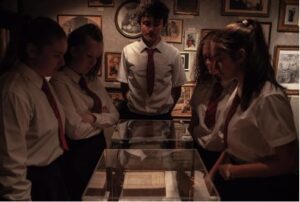The Victoria & Albert Museum (V&A) in London, a leader museum in digital cultural creation, has launched a project to attract young people to the theatre and books. More specifically, from their words, “the project tackles the challenge of making literary manuscripts accessible to a teenage audience“. For this reason, the Museum has used a well-known English writer: Charles Dickens, as the liaison of this ambitious project.
The Museum has started a collaboration with the Punchdrunk Enrichment and creative technology studio The Workers. The idea is to create a mixed reality experience “a fresh immersive cultural experience”. The V&A started from the conception that the Dickens manuscripts are “fragile, hard to decipher, and can be difficult to access”. Furthermore, they are reasonably mirroring the English society during the time of Dickens by representing the product of the pioneering ideas of a controversial author. Consequently, the question was how to turn the analogue manuscripts into an engaging experience?

The challenge is to transform into digital something that new generations generally consider boring and old. As the Museum reported, “the prototype experience is designed to engage young people with Dickens’s creative process and inspire them to continue on their own creative journey“.
The project is highly inclusive: teachers and students (14-17 years old) have cooperated to improve the hypnotized goal. A conscious choice, considering that no one better than students could be helpful in this project. In return, “students and teacher participants will benefit from engagement with the partners, taking back ideas to apply in an educational context. The research feeds into two related VARI projects, Show+Tell+Share and Digital Dickens“.
The AR solution could transfer the user in the Victorian age. A whisper of Dickens makes magical the experience, as the Workers said, “imagine putting headphones on and listening to a parallel world: Charles Dickens whispering into your ear, footsteps coming closer, Big Ben chiming in the background…”.
by UNIBA
Credit: Stephen Dobbie

